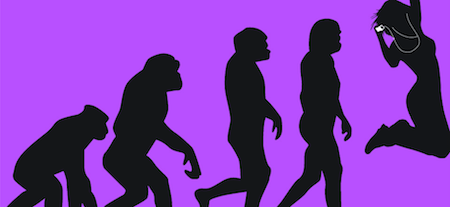I am super-excited to share with you a book recently introduced to me: Why We Like Music: Ear, Emotion, Evolution. The book was originally published in Italy about 5 years. It has been translated into English by Stephen Thomson Moore and released just two months ago by New World Media.
Here’s the short version of this review: If you love reading Levitin, then you’ll love reading this book! I think it’s a must-read for any music therapist…and for anyone who is interested in why it is music touches us so deeply.
Here’s the longer review…
The author is science writer Silvia Bencivello. According to her bio, Ms. Bencivello is not only a writer, but also a radio and TV personality with a background in medicine. Which tells me–and which is apparent in her book–that she knows what she is talking about…and knows how to talk about it in an engaging and easy-to-read fashion.
What was especially interesting to me was that Why We Like Music not only nicely summarizes the music neuroscience research from the 1990s and early 2000s, but it also goes more deeply into music’s role in our evolution. In fact, Bencivello pulls together research not just from evolutionary psychology, but also animal research, neuroscience, and infant development.
Better yet, Bencivello doesn’t just summarize the research, but she interprets it and describes it in an accessible way. With lots of stories and anecdotes along the way to boot.
The biggest down-side to this book is that it didn’t get published in English sooner! And what if she had written it this year? Who knows what Bencivello would have had to say about all the fabulous music neuroscience research that has happened over the past 5 years.
In short, I highly, highly recommend this book if you are professionally or personally interested in why we like and respond to music. It’s available in print and Kindle edition on Amazon, as well as in the Apple iBookstore.
I leave you, then, with an excerpt from the book…What do you think?
——————————————————————————————-
(page 73-74)
PROTOLANGUAGE…
Tecumseh Fitch is a psychologist at St. Andrews University, Scotland, as well as an amateur musician—his “I Don’t Believe in Evolution,” heard in sneak preview at the Festival of Sciences in Rome in January 2006,10 is certainly not to be missed. Fitch is one of those who believe that all that is needed to dismantle the theory of human beings using music as a sexual attractor are a couple of observations:
In the animal kingdom, it is true, it is almost always the males who sing, and they do so especially during mating season. But there are also splendid examples of species in which males and females sing together, as happens with tropical birds. However, for us this is not the case at all. Among humans, both males and females have the same musical abilities. These abilities appear long before sexual maturity. Indeed, we already hear music while still in the womb! (11)
Thus, the fact that a love song can create the right atmosphere during a date does not mean that music was created in order to make us mate. In the same way, the fact that young musicians—from the guitarist who sings on the beach to the pop star in a boy band—are often surrounded by pretty girls has little to do with the erotic potential of music. This, according to Fitch, is more likely to be linked to music’s emotional content and the ability that any song may have to move us, depending on our personal tastes. Moreover, unlike other animal species, it is difficult in the case of human beings to claim that males and females have different abilities, or even different musical tastes—indeed, it is obvious that interest in music is completely independent of reproductive capacity or sexual orientation.
There is a fundamental difference between how humans and animals make use of music. For us music is above all a pleasure, whereas other species need it primarily for communication.
So even though we may interpret the sounds produced by animals as what we would call music, their function is more similar to what we consider as language.
This is why those who deal with the question of evolution and the origin of our musicality cannot help but focus on the relationships between music and language development. This is also true because of the undeniable similarity between the structures that we use in order to sing and talk, listen to music and follow a conversation: our voices, our ears and our brains.
However, the story of evolution has taught us that our mechanisms of communication did not simply appear just to allow us to talk, in the same way as our eyes did not appear just to let us see, and so forth. These are systems that evolved through a series of chance events and proved to be more advantageous than others because they enabled the development of various abilities (or improved some pre-existing possibilities), which in turn made it easier to survive and to reproduce in a particular environment. In fact, the structures we use to produce our voices and those we use to hear the words of others in a conversation also exist in many other animals. The larynx with the vocal cords and the cochlea in the inner ear are not peculiarities found only in our species, nor is their only function that of letting us speak and sing, even though we humans use them mostly for this purpose. When these structures appeared, they turned out to be highly advantageous solutions to general problems of communication and perception: having vocal cords that vibrate with the passage of air while you breathe out made it possible to create sounds or shouts. The ability to hear the noises made by other animals moving among the vegetation was an obvious advantage, both as prey or predator.
In the struggle for survival, combining the two things—being able to call out to a companion to warn it of the presence of a hunter, safe in the knowledge that the cry would be heard and understood, or then again, being able to frighten prey with a roar and then follow it while it retreated through the foliage by listening to the noise it made—gave animals powerful weapons. Later, humans also learned to use these same weapons in order to talk—and who knows how, when and why, also to make music.
According to Fitch, the connections between music and language are clear: music is a protolanguage from which our spoken communication evolved—and it stuck around even after the birth of language because we nd it pleasing. The first person to come up with this theory was Charles Darwin, according to whom, in addition to being used as means of seduction, early musical vocalizations were the origin of words.
© 2011 Music Word Media Group, used by permission



 orcid.org/0000-0001-8665-1493
orcid.org/0000-0001-8665-1493






{ 4 comments… read them below or add one }
Thanks for Posting!! I look forward to reading this!!
I’d love to hear what you think! I must own my bias and say I *love* reading these kind of books! I hope you enjoy it as much as I did 🙂 ~Kimberly
I will def. follow up!! I loved Levitin’s book so when you mentioned that, I was on board! yay for getting this right away on my kindle! Boo that it will probably take me a couple months to read with Holiday madness. 🙂
Hi Kimberly and Rachel,
Happy New Year to you! I am glad to read your commentary, Kimberly and if you have had a chance to read the book, Rachel. I know we are just past the holiday season and many are still catching up but we are very interested in staying connected to people with an interest in this area. I am in the office part time now but will definitely try to keep an eye on the postings here and on your blog generally, Kimberly. Thank you again!
MiMi Hegge
Music Word Media Group
You must log in to post a comment.